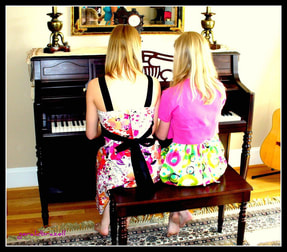
It doesn't have to be that way! I love teaching duets because it provides my students with the opportunity to make music with a friend--or sometimes to make a new friend through music! Ensemble playing can help build a sense of camaraderie in your studio--not to mention the benefits to your students' reading and rhythmic skills!
I would like to share a few tips that I have found helpful when working on ensemble pieces with my students. With these tips in mind, you and your students will be ready to double the fun with duets!
- Choose the right level of repertoire. I find that it is best to assign repertoire that is a level lower than the least advanced student in your duet pair is currently playing. The extra focus required to play with good ensemble and balance between parts makes duet playing challenging enough. Set your students up for success by giving them a piece that will allow them to focus on these challenges without being overwhelmed.
- Assign your parts (and your players) carefully. You want at least one player in your ensemble with a strong sense of beat, preferably playing the part that provides the rhythmic foundation for the piece (which is usually the secondo). Pair your students so that a rhythmically weaker student has a stronger player to work with. Or, if you have two students that struggle with rhythm, be sure to assign them an even easier duet than you normally would so that they can be successful!
- Make sure students are confident in their own parts before rehearsing together. My students have to pass a 3-part "test" before they are allowed to practice their duets together. Each student must be able to: 1) play their own part successfully on their own; 2) play their own part successfully with the metronome, and 3) play their part while I play the other student's part. Once a student can do these 3 things, the duet fun can begin!
- Work on balance between parts by color coding the melody and harmony. One of the most challenging elements of good duet playing is being able to balance the melody and harmony between the primo and secondo parts. I find it helpful to have students go through their parts individually and color code each section to show if they are playing melody or harmony. Then, when students rehearse together, ask them to "play" the entire duet but only play out loud the parts where they have the melody. This is a great way to help students hear the melody throughout a piece and know how their parts work together!
So, are you ready to double the fun in your studio? Do you work on duets (or trios and quartets) with your students? Please comment below!
P.S. Check out some of my own fun duet compositions on my YouTube channel HERE!

 RSS Feed
RSS Feed